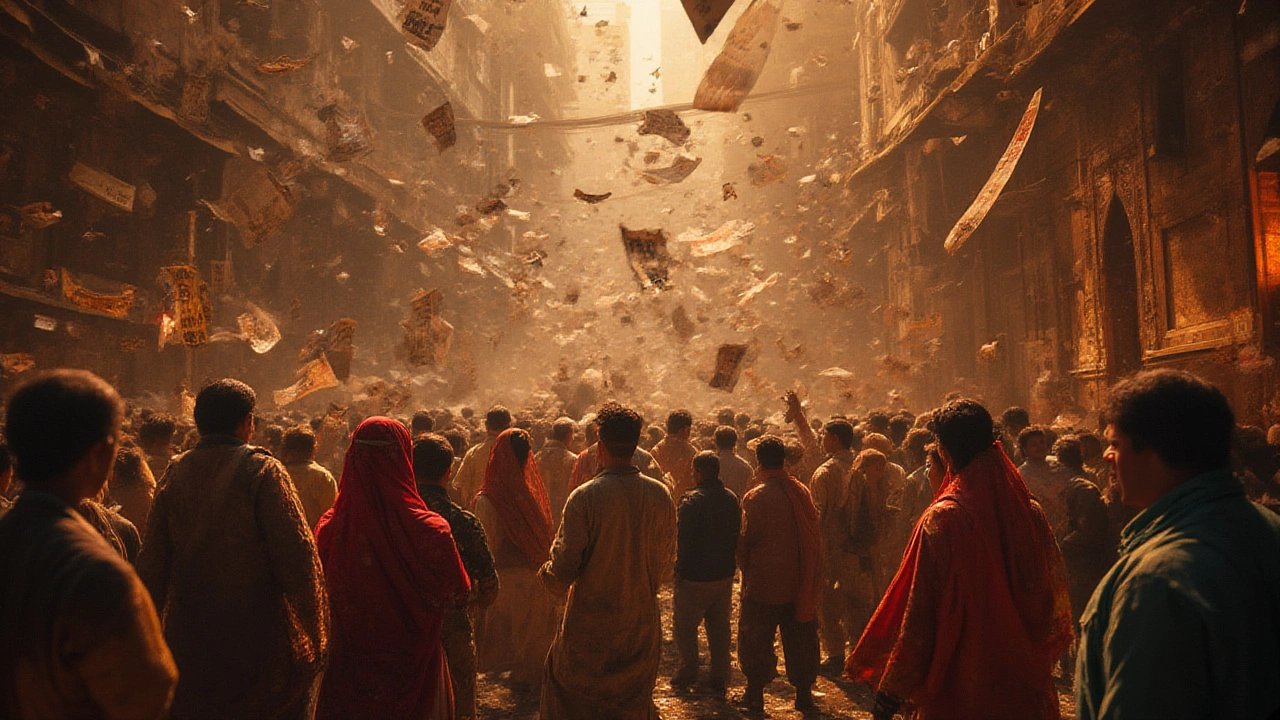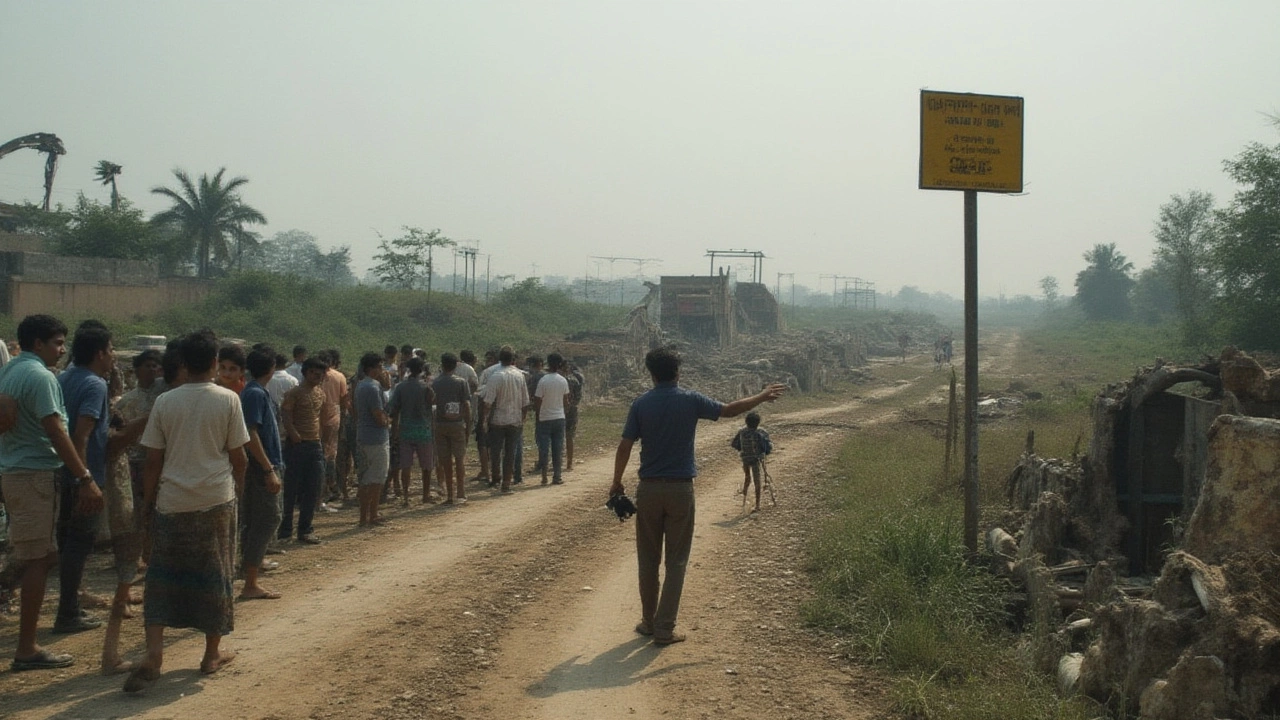Biggest Flop in India: Disastrous Failures That Shocked the Nation
 Jul, 5 2025
Jul, 5 2025
Ever heard about something so hyped in India that people were almost certain it would smash every record, only for it to turn into a jaw-dropping disaster? India’s seen more than a few of these legendary flops—some so dramatic that they became cultural talking points from Mumbai chai stalls all the way to the drawing rooms of posh South Delhi apartments. We're not talking about everyday letdowns, but real epoch-making failures that echoed far beyond their sector. Some sparked memes, others caused heads to roll, but all of them left the nation doing a collective double-take.
Billion-Dollar Busts: Business Ventures Gone Wrong
When people talk about the biggest flop in India, the Kingfisher Airlines debacle tops almost every list. Launched in 2005 by liquor baron Vijay Mallya, this airline was pitched as a game-changer, promising Champagne service in the sky and an experience like no other in Indian aviation. For a few years, it was the favourite of celebrities and the well-heeled. But here’s where things went sideways: astronomical spending, aggressive fleet expansion, and debts that ballooned faster than a festival hot air balloon. By 2012, Kingfisher’s wings were clipped. Massive unpaid dues to banks, employees, and even airport authorities led to the airline’s collapse, leaving over 17,000 people jobless and about $1.5 billion in unpaid loans. That left the country’s financial watchdogs in a frenzy and turned Mallya into a regular on Indian news channels—for all the wrong reasons.
But Kingfisher isn’t alone. The Ambani family’s Reliance Communications, once a telecom powerhouse, managed to burn through billions before financial stress and the telecom wars with Jio and Airtel forced it into bankruptcy. What once was seen as a mighty empire became a cautionary tale for anyone enchanted by rapid, unchecked expansion. Forbes reported in 2019 that Reliance Communications’ market value had tanked by nearly 99% from its highest point—an epic freefall if there ever was one.
Yet sometimes, it’s not just private businesses—government projects sometimes steal the show. The 2010 Commonwealth Games in Delhi promised India a glittering place on the world stage, but the only thing shinier than the newly built stadiums was the corruption scandal. Costs vaulted nearly triple the original budget (from Rs 1,620 crore to roughly Rs 18,000 crore), while a series of reports exposed substandard construction, contract fraud, and missing funds. Instead of global applause, there was worldwide embarrassment.
Here’s a snapshot of some notorious business blunders and major project flops:
| Flop | Year | Sector | Financial Impact |
|---|---|---|---|
| Kingfisher Airlines | 2012 | Aviation | $1.5 billion in unpaid loans |
| Reliance Communications | 2019 | Telecom | 99% drop in market value |
| Commonwealth Games, Delhi | 2010 | Government | Over Rs 17,000 crore budget overrun |
| Satyam Computer Scam | 2009 | IT Services | $1.47 billion fraud |
One thing about these business disasters is that they tend to reverberate far and wide—impacting everyone from ordinary employees to major banks. If there’s a tip here, it’s this: For entrepreneurs in India, flashy launches and celebrity endorsements don’t always translate to lasting success. Keep your eyes on sustainable funding and genuine value.

Celluloid Nightmares: Bollywood’s Titanic Flops
Now let’s dip into India’s true passion—Bollywood. The country churns out more movies than anywhere else, but that doesn’t mean every film strikes gold. In fact, Bollywood is famous for spectacular flops, some with such expensive promotions and sky-high expectations that you wonder if producers were banking on magic rather than scripts. The one that always gets dragged up? 'Bombay Velvet.' This 2015 movie directed by Anurag Kashyap starred Ranbir Kapoor and Anushka Sharma and was aggressively marketed as a blockbuster in the making. Fox Star Studios pumped in about ₹120 crore (over $20 million back then). But the audience just didn’t show up. 'Bombay Velvet' grossed less than ₹40 crore at the Indian box office. The loss was so huge; it almost stopped big studios from attempting grand experimental projects for a while.
To put this in perspective, Bollywood typically operates with thinner profit margins than Hollywood, so a flop of ₹100 crore or more is nothing short of a fiasco. And yet, Bollywood has seen quite a parade of these. 'Love Story 2050,' starring Harman Baweja, spent lavishly on VFX and futuristic city sets. The marketing blitz made it look like the next Avatar but, sadly, the story and acting tanked. Result? A loss of nearly ₹50 crore and a career left nowhere to go.
Then you’ve got Aamir Khan’s 2018 film 'Thugs of Hindostan.' It assembled a superstar cast, featured stunning visual effects, and boasted a budget of around ₹300 crore—making it one of the most expensive films in Indian history at the time. The critics weren’t gentle and neither was the audience. The movie fizzled within a week, failing to recover anywhere near its costs. Even Aamir issued a public apology to his fans. Who does that?
If the sheer numbers make your head spin, check this quick roundup of box-office black holes:
| Film | Year | Total Budget | Box Office (India) | Estimated Loss |
|---|---|---|---|---|
| Bombay Velvet | 2015 | ₹120 crore | ₹40 crore | ₹80 crore |
| Thugs of Hindostan | 2018 | ₹300 crore | ₹145 crore | ₹155 crore |
| Love Story 2050 | 2008 | ₹60 crore | ₹11 crore | ₹49 crore |
| Ra.One | 2011 | ₹130 crore | ₹115 crore | ₹15 crore |
Why do these movies flop so badly? Sometimes, it’s just a mismatch between what film-makers think the audience wants and what actually works. Or maybe people are tired of watching the same stars in recycled roles. If you’re ever tempted to bet on a Bollywood blockbuster based on its hype alone, my advice—hold your horses. Wait for those first audience reviews and don’t get fooled by shiny billboards.
Strangely, a flop can turn into a cult favourite with time. There are fans of 'Jhoom Barabar Jhoom' who can belt out every song and defend the film with wild-eyed passion. But in the cold world of money and impact, a flop is a flop. Behind every trainwreck, though, is a treasure trove of lessons for studios, actors, and even the audience.

Public Outrage and Policy Disasters: When Projects Fail the People
No matter where you live in India—city, town, or some leafy village—there are some government projects you remember not for what they did, but for how they flopped. Among all these, nothing comes close to the Aadhaar data leak scandals. The Aadhaar project aimed to give every citizen a unique biometric ID, and, on paper, it sounded brilliant—streamlined services, easier identification, and plugging leakages in welfare. But reality? Not so neat. In 2018, a report by The Tribune alleged that personal details of Aadhaar holders could easily be accessed for as little as ₹500. You’d think, in the age of digital everything, security would be a top priority, but repeated breaches and privacy concerns shook the nation’s trust. It didn’t help that fixing things proved a mammoth undertaking, sending bureaucrats into panic mode and sparking Supreme Court interventions.
Another infamous case is the Maggi noodles fiasco in 2015. Yes, instant noodles! For decades, Maggi was comfort food for millions of Indians. But suddenly, the country’s food safety regulator found levels of lead in Maggi that exceeded permissible limits. You couldn’t visit any household (mine included, if you catch me in Birmingham at the right hour with Eleanor and Nimbus watching reruns) without seeing people mourn the loss of their go-to 2-minute meal. Sales plummeted, Nestle India lost Rs 500 crore in a single quarter, and market shelves were emptied overnight. It took months, legal battles, and a lot of testing before Maggi made a comeback. That’s a unique case of public outrage meeting corporate scrambling; a true 'food flop' at national scale.
When talking about policy disasters, who could forget the 2016 demonetisation? In a late-night televised address, Prime Minister Narendra Modi declared that the ₹500 and ₹1,000 notes were no longer legal tender, sending over a billion people scrambling to ATMs and banks. The aim was to curb black money and fake notes, but what followed was chaos: endless queues, cash shortages, and businesses brought to a halt. While demonetisation did push digital payments, the Reserve Bank of India later admitted that 99.3% of the demonetised currency returned to the system anyway. So, was it worth the hassle?
If you ever find yourself grumbling about broken promises in public projects, just remember these unforgettable disasters—there’s always a lesson hiding behind each setback. Governments and big companies do well to pay attention to transparency, communication, and robust planning. And for everyone else—never underestimate the power of public opinion when a beloved project goes south!
Do you spot a theme by now? In India, whether it’s jet-setting businesses, Bollywood dreamers, or grand government plans, the biggest flops tend to mix sky-high ambition with good old-fashioned oversight. Those are the stories that become dinner table material, debated, joked about, and—every so often—quietly forgiven as India moves on to its next big thing.